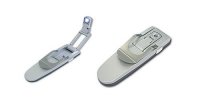Just trying to be helpful by sharing what works for me without being too offensive. I dont get jitter with tilt gain of over 500, so don't think I will bother with the Tonka toy solution.
500 on a AV130 with a heavy camera - This I would like to see, As they say when the flag drops........
I guess it's time to start showing some mirror tests and some flight videos. When facts are few bull**** abounds.
I now have this working not far short of the Zen. lets see what you have. And what the others have, then we can make the true evaluations that can be of benefit to the world.
All I said was I would make this work with what ever it takes to correct design mistakes that I did not make. I inferred that the main problem is mechanical feedback errors and not electrical so lets see who is right shall we. I will have a video up by next week I expect you to do the same.
The AV 200 is less of a problem and the AV130 is a tougher assignment because the IMU is on the same side as the motor. If I were to make a design change on the tilt drive it would have an 8.4 volt high res servo running in direct drive with the imu on that same shaft. I have tested the imu on the bench in a controlled environment (rate table) and it does not have any of the jitter problems or pointing inaccuracy.
This is a bit like GoPro they sit back and let the customers do the clever bit.

